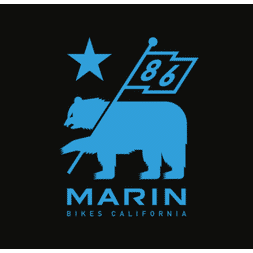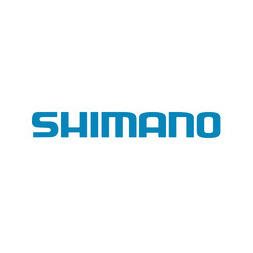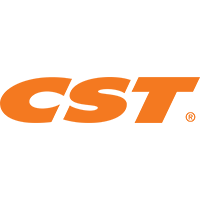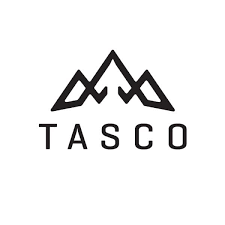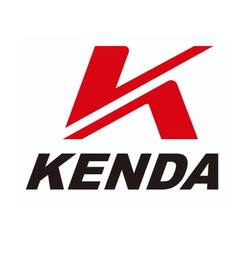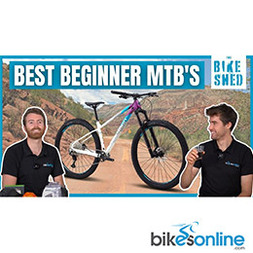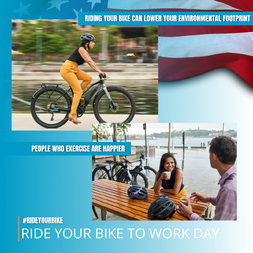Cycling Tips Interview: BicyclesOnline’s Founders on Cell bikes, Aldi, and International Growth

Australia’s population may only be small, but its cycling industry punches well above the weight of many other, far more populated, markets.
While it’s brands like Giant, Trek, Specialized and Merida that dominate the floor space in many of the 500-or-so bike stores across the country, there’s a small number of online-only players focussed on gaining the attention of the same customers.
One such example is BicyclesOnline, the exclusive distributor of Polygon and Marin bikes in Australia, and more recently, the provider of Cell Bikes to Aldi stores nation-wide. And now this company has launched into the US market with bikesonline.com.
I sat down with the two founders of the company, Jonathon Allara and James van Rooyen, along with bike designer Dave Musgrove to chat how the business is going, where it sees the growth in Australia and to learn more about industry trends.
Dave Rome (DR): You guys founded BicyclesOnline in 2011. What was the five-year plan at that point?
Jonathon Allara (JA): In 2011 we had a theory that there was a significant opportunity in selling complete bicycles over the internet. A number of other industries were doing quite well with online sales and growing quite significantly.
James van Rooyen (JvR): Back then you couldn’t buy any bike online unless it was a dodgy eBay special. And those selling bikes online, such as Cell, were quite hit-and-miss. We realised that the Australian cycling industry was one of the few industries where you couldn’t buy a top-end brand online. And so we saw that as a big opportunity.
.jpg) The founders of Bicyclesonline, Jonathon Allara (left) and James van Rooyen (right).
The founders of Bicyclesonline, Jonathon Allara (left) and James van Rooyen (right).
We didn’t look to create our own brand, we wanted to sell one that already existed. That was really important. And we realized there are only a few manufacturers of brands that have their own factory, and that too was going to be really important. Basically, Polygon was the only (manufacturer-owned) brand that wasn’t already in Australia.
[At that stage] Polygon were already hugely strong in Southeast Asia (they’ve been in business for 30 years), and they had always wanted to get into the Western market.
And then we went looking at the actual manufacturing facilities to make a decision about which brand and which factory to work with, and Polygon’s facilities in Indonesia were far superior to anything we’d seen in Taiwan at the time. Which was really surprising.
DR: You mentioned the need to have a brand that had their own factory. Is this because it provides a cost advantage?
JvR: No, as a new business we needed to focus on one thing first. And when we were starting up, we wanted to have a complete range of bikes. We had [access to] 110 different models just through Polygon.
And that was always, for example, Cell Bike’s downside in that they could only have four different frames (due to the minimum orders associated with having their own models). We could leverage off Polygon’s massive range and that advantage still exists today.
DR: It’s almost a decade since you launched. How do you believe the market has changed in that time?
JvR: There has been a huge increase in trust in making purchases on the internet and more and more are now larger ticket items. Australians are getting more comfortable with sitting on their sofa and buying from the comfort of their own home as opposed to needing to go to a store.
The service offering has improved so much more, delivery partners have matured massively, and delivery times are much shorter now, too.
JA: And the way that a bike comes to you now in 2020 compared to if you’d bought one on the internet ten years ago… that gap between bricks and mortar and online is becoming much narrower than it was in the early days.
JvR: Along with that, I’d say the market has developed a lot more. In the past we had a bloodbath; it was really easy to go to China and order a container of bikes. And that was kind of the genesis of online [retail] a decade ago. You cannot do that now. Now if you try to buy bikes from China, there is just so much that needs to be done. From an online perspective, from a buying perspective, from a service perspective, from a credibility perspective. The barriers to entry are orders of magnitude greater.
So I would not expect to see a whole bunch of new online players coming. I could [perhaps] see other brands changing their model just to try to compete on that side of things.
JA: And this is already happening. If you think about the major brands now, a lot of them are offering click and collect in store. In the US, Trek and Giant have been doing that for a little while now, and that’s becoming a big part of their business.
The customer’s expectation level is at a much more mature stage than what was ten years ago in terms of what’s an acceptable product to receive via an online purchase. So not to say it can’t be done, just that it would need some pretty significant investments to enter the market.
Dave Musgrove (DM): I’d add that consumers have become much more educated over the past ten years. Ten years ago people were just saying, ‘right, I’ll buy a groupset on a frame and that’s as good as anything’. But brands and retailers must be more transparent now. The information is out there and the customers can make more informed decisions. So it’s hard to, as James said, buy a container of something off the shelf.
JA: I heard a figure on the radio the other day that online retail in Australia still sits at approximately six and a half percent of total retail. [Compare that to] the figures now in the UK, which I believe is somewhere between 22 and 25 percent total retail. In China, 53-54 percent of total retail is now online.
There’s a good chance Australia will get to 15-20 percent in the next five years. So this space for us is a space of growth and opportunity. [This is an] exciting place to keep innovating in and keep pushing the boundaries of what you can do with that experience with customers buying over the Internet. So that’s our primary focus. We’re not (again) opening retail stores, it’s about just improving the existing experience.
DR: On that, you had a retail store, and now you don’t. Was that a move to focus solely on the online customer? .
JA: It’s very hard to be really good at everything. And when we made the move to focusing on one channel (online), then the business really transformed. We saw more growth, the customer satisfaction levels grew a lot more. And yeah, it was just that sole focus on where the business is going and what was important to make us a successful business.
DR: What about some of your new competitors? Canyon has only recently entered the market. And maybe they’re not a direct competitor, but Amazon has entered, too. How do you see these big companies impacting the Australian industry?
JvR: I think Canyon coming into the Australian market is a really, really good thing because it validates the online bike purchasing channel.
For sure we compete with Canyon, [but] we’ve got a much broader range {than Canyon] and we spent a lot of time getting the Australian market right because it’s not the same as overseas markets.
One of our big efforts at the moment is educating customers that you can buy a bike on the Internet. More than 90 percent of people (in Australia) buy bikes in stores. It’s a bit like what you see with certain online mattress companies, they’ve spent a lot of energy educating people about how to buy a mattress on the Internet. And the quality is really good.
Having a few players that are investing in that education aspect, such as Canyon, us and a bunch more, just provides more options for Australian customers. And that’s a good thing.
DR: So you started the business with Polygon and added Marin in 2017. The two seem to overlap somewhat, how are they positioned in the Australian market?
JA: They both stand for different things in the market. We’ve brought Marin on to be more of a premium offering within our portfolio of bikes and also to offer some products in some areas that Polygon are not known for.
For example, Marin obviously has a really strong mountain bike heritage. And they’ve got a long history in that side of things. And then there are some really nice bikes in the gravel and urban side. Marin is releasing and developing bikes in this space that traditionally Polygon haven’t played in. That’s really exciting to see what they’re bringing out, especially given that bikepacking, gravel and touring stuff is growing in Australia.
DR: Where do you see a brand like Polygon strongest? Where’s Marin strongest?
JvR: Polygon is the strongest in that entry-level mountain biker looking to get into the sport and get onto something that gives them a lot of bang for buck.
And it’s interesting, some of those same customers who started off with us on a $500 Polygon hardtail, who we probably initially thought would have moved to a more premium U.S. or European brand as a second or third bike, are actually now riding a five or six thousand dollar carbon Polygon dual suspension bike.

As seen at Eurobike, the Marin booth is filled to the brim with various types of bikepacking, touring and gravel rides.
Marin has been good for us because we’re attracting, I suppose, more experienced riders who are already riding more established brands. I think that’s been a really nice addition to the portfolio of bikes. We’re attracting customers from larger US and European brands. [Customers who] probably wouldn’t have looked at a Polygon, but are happy to look at a Marin.
DR: So what numbers are you doing on an annual basis, how many bikes are going out the warehouse door?
JvR: As a business, we are growing. I think in a stagnant market, we are growing exceptionally fast. And it’s about trying to contain that growth, to be honest, like we have a lot of different opportunities for different markets and we’re really trying to actually narrow those down. And that comes down to scalability of the internet. So I might hold off on giving specific numbers.
DR: What about the road market? Polygon is not necessarily a strong brand in that market. Cell Bikes arguably did reasonably well in that space. Is that something you see yourselves focusing on in the near future?
JvR: Since Cell and other value-based road bike brands have exited [the market], we’re starting to see a bit of pickup on road cycling sales. There is definitely a market for that value offering.
However, the road market is so competitive, and unless you’ve got heritage, it’s a lot more about fashion than it is about value, while the mountain bike market is a little more targeted toward price.
JA: It’s also not an area that the brands that we’re working with are investing in. Marin made a decision a few years back to pull out of road in the US market because it was a very difficult market. And they decided to work on the gravel side of things, and it was a good decision from the CEO of Marin at the time.
For us, we will continue to offer entry-level kind of value products from Polygon in the road space, but in terms of higher-end stuff we kind of cap out.
DR: Tell me about Entity.
DM: It’s an accessory brand we own that we sell to 10 countries.
The Entity brand covers everything from OEM (Original Equipment Manufacturer) components, the aftermarket components and aftermarket accessories. The OEM components also include e-bike systems. So we have our own e-bike system that’s on Cell bikes. And that e-bike system will be used as OEM in other e-bike brands as well, Polygon has begun using it, and strategically, this gives Polygon another option to offer the brands it contract manufactures for.
DR: Let’s talk Cell bikes. Formerly a fierce competitor to you, the company went bankrupt and you quickly acquired the trademark. What are the plans for Cell Bikes?
JvR: We’ve relaunched Cell as an e-bike bike brand. It fits into a couple of areas where Polygon and Marin don’t. Firstly, it’s continued as that brand that gets people back on the bike or gets people on a bike. It’s a gateway bike.
So often that Deliveroo rider or that person who wants to get to uni, the bike they often choose is not designed for them. It is put together as cheaply as possible. Really to Dave Musgrove’s credit, there aren’t many people who can design a bike properly who are getting onto a bike [for the first time in a long time].
 Cell Bikes were only recently targeting the Australian road market with high-value bikes, such as the Omeo.
Cell Bikes were only recently targeting the Australian road market with high-value bikes, such as the Omeo.
So the idea behind Cell is to really ensure that the first experience is a positive one. And then go on from there. Cell have a really long history in Australia, the brand resonates value with them, and they sold a lot of bikes. And a lot of that is from the bikes that Dave designed, and that’s something we wanted people to be able to relate to.
I think that like we were talking about with Canyon, Cell going out of business was not good. You need competitors to validate the market and so it was sad to see them go.
JA: Having Cell also gives us new opportunities. You wouldn’t see Polygon at Aldi. We don’t own Polygon or Marin, but we own Cell. It’s a value proposition and a brand that we have more say in the direction of.
DM: From 2002 Cell started doing something dramatically different in the traditional bike market. We’re reintroducing Cell early in the e-bike market. And once again, doing something dramatically different.
You know, e-bikes are currently quite elite, the way we see it is that the price point is unattainable for the everyday Aussie. And CyclingTips’ readership, relatively speaking, like to spend a lot of money on bikes, but for the everyday Aussie, what Cell did on the normal bikes, and what BicyclesOnline followed with Polygon, we now have the opportunity to do with e-bikes.
I get pretty passionate about this on the advocacy side of things and what cycling can do. This really can change the way Australian society and wider functions. What an e-bike offers is that you can do whatever you want away from the sport side of cycling and get people out of their cars and give them a legitimate option while breaking down heaps of the barriers to cycling. And you don’t need to spend an arm and a leg to do so. It’s a huge change and that’s pretty exciting.
JvR: We see e-bikes becoming massive. I don’t think it’s even started yet. In Australia especially, but actually on a global scale. I think we’ll see e-bikes becoming much more prevalent across the board.
So if I could summarise the relationship between Cell and Polygon. You will likely see Polygon having the best value Shimano Steps-equipped e-bike out there, but that’s still really expensive to the average person – it’s an AU$2,500 bike.
Cell is about accessibility, I see it as a turning point to where we could really increase the number of people riding bikes. And they’re going to enjoy that experience. Whereas if you’re getting a similarly priced bike from eBay, you don’t know what you’re getting.
DR: You’ve been supplying bikes to Aldi for their weekly deal specials, this isn’t a small thing. How many units are we talking?
[Laughter]. We actually can’t say. I’d say we are one of the biggest e-bike suppliers in the Australian industry, it’s big. So for example, the campaign we did with the Cell Ultimo (a cruiser-style e-bike priced at AU$1,000) was nation-wide, Aldi has 550 stores in Australia.
DR: So through Aldi you’re selling a thousand dollar e-bike. Do you believe that’s the price floor for an e-bike?
DM: We feel that we’re setting the benchmark for where a well-considered, quality and enjoyable riding e-bike should be. And through Aldi, there’s no other (sales) model that can allow us to go as cheap.
We’ll also be selling Cell bikes through BicyclesOnline, but we simply can’t sell them as cheaply as we can through Aldi. So we could easily make the bike hit a lower price point, but something’s got to give and we don’t want to be creating landfill.
DR: Would there be compromises in going lower at this point?
JvR: Yeah. Aldi’s incredibly well respected and has a very generous returns policy with strict warranty requirements on its suppliers. As a supplying company, you will get burned to try to go lower (in price). There is an acceptable level of quality that both the customer and Aldi expect.
I’m going to speak out of turn here. I just bought a $500 e-bike from a department store, half the price of ours, and they’ve now discounted it down to $300, [I know this is] below their manufacturing cost.
And what it comes down to is that $500 is a lot of money. For that money, it’s got to work, and that bike doesn’t work. It’s a shitty customer experience, it’s not good for the store [selling it] and the supplier will hurt. We know there is gonna be a race to the bottom, and it’s one that we won’t compete in.
DR: Cell had some pretty cool models in the past, courtesy of Dave Musgrove. What are the chances of seeing some of these more successful models, like the Omeo, return?
JvR: Where we see that is there are probably a few areas where Polygon is pretty good. We [also, now] have a bit more say in terms of the Polygon line-up. So for now, Cell will stay on the path of targeting that first bike buyer. We will expand the range for sure, and there will be some crossover, but we’re not going to come with a new Omeo. Unless it’s electric {laughs}.
DR: You’re soon enough going to come into your second decade of business, what excites you most about that? Is it e-bikes?
Well, there are lots of different things. I think that what we see happening from a product point of view for sure, e-bikes. But I think more broadly for BicyclesOnline, and I think for both Jono and I it gets a little altruistic in this kinda way. But we’d like to see more bicycle riders out on the road and trails.
JA: To add to that, we spent a lot of time testing a business model in the Australian market and refining it and improving it and challenging what was possible. We just launched into the United States in May 2019 (with BikesOnline.com). Right now we have an exclusive distribution of Polygon in North America. Including the US, we now employ 40 people.
The US market is more than 10 times larger than Australia. That’s an interesting and exciting opportunity. There are some direct to consumer brands already, [however] we’re really excited about trying to make an impact in that market and introduce the product and service that we’ve done over here in Australia. And I think beyond that there are other markets that would be interesting to explore.
See the original article here.
Leave a comment
- Training Tips for a Beginner Cyclist
- Industry Reviews
- Bikepacking 101
- Worth-it Blogs EP#2: Hardtail Hitters
- Bikes Online Does Sea Otter
- EWS #5: Burkville
- Drop bar Buyer's Guide
- The Bicycles Online's Company Fitness Challenge
- Mountain Bikes Buyer's Guide
- Sustainable Strategies
- Worth-it Blogs EP#3: Budget Hardtail Upgrades
- Commuter Bike Guide
- Pinned With Polygon | The gang goes to Crankworx
 USA
USA AUS
AUS





